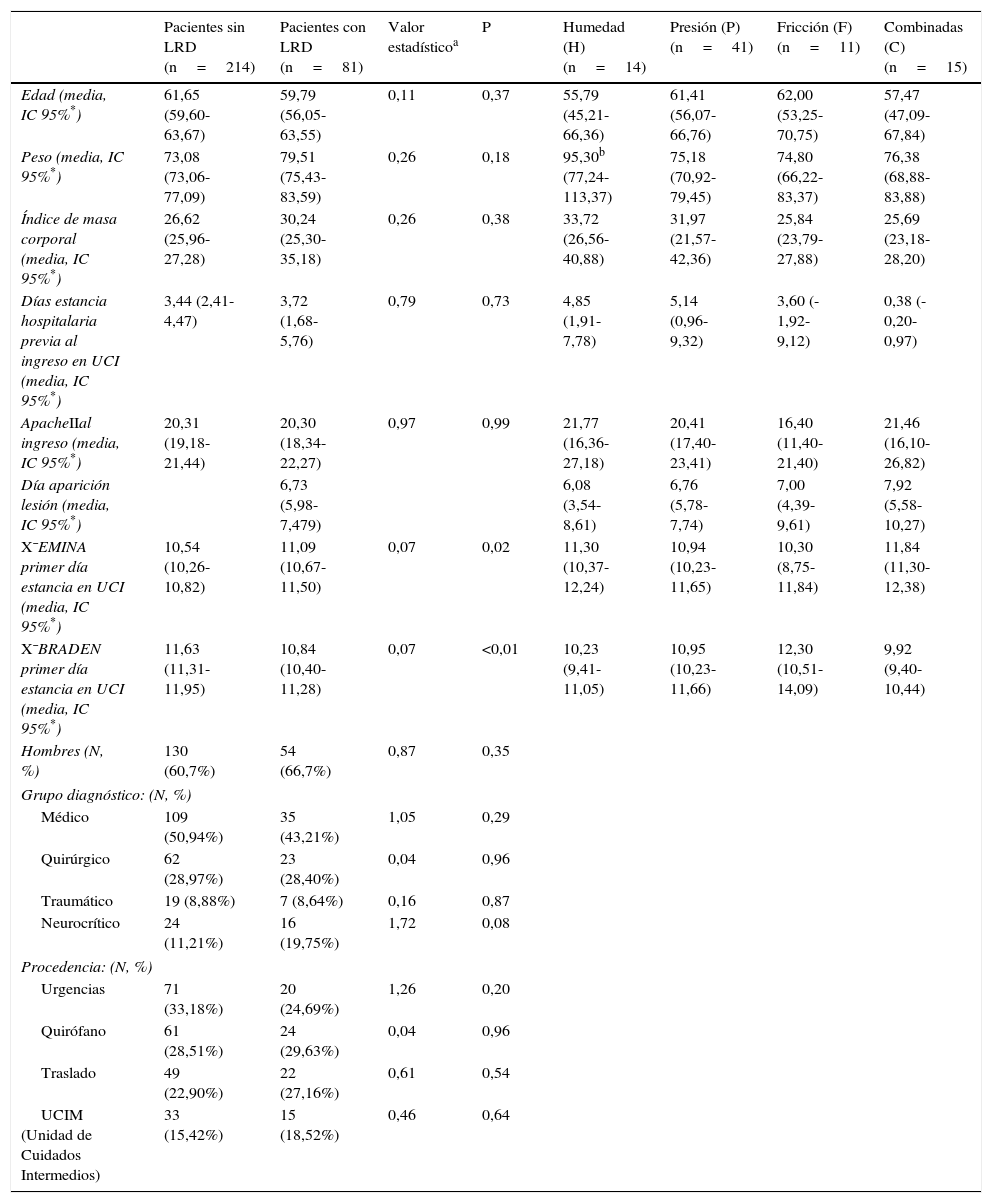Determinar la incidencia de los distintos tipos de lesiones relacionadas con la dependencia (LRD) en una población de pacientes críticos.
MétodoEstudio descriptivo, longitudinal y prospectivo realizado en una Unidad de Cuidados Intensivos desde enero de 2014 a enero de 2015. Incluidos los pacientes mayores de edad que no presentaban LRD al ingreso. Excluidos aquellos con muerte encefálica y/o estancia en la unidad superior a dos días. Permanecieron en estudio hasta que desarrollaron LRD, fueron exitus, dados de alta o su estancia superior a 14 días. Cada paciente fue evaluado diariamente hasta desarrollar LRD o salida de estudio. En el caso de presentar LRD esta se fotografiaba y se anotaban los datos relacionados.
La comparación entre variables cuantitativas de distribución normal se realizó mediante la t de Student, y se utilizó la U de Mann-Whitney en el resto. Entre variables cualitativas se utilizó el test chi cuadrado de Pearson considerándose en ambos casos significativa una p≤0,05.
ResultadosIncluidos 295 pacientes, el 27,45% de los cuales desarrollaron LRD. La densidad de incidencia fue de 41 LRD/1.000 días en riesgo. El 50,62% de las LRD se catalogaron como UPP, el 17,28% fueron lesiones por humedad, el 13,58% lo fueron por fricción y el resto resultaron lesiones combinadas. El riesgo según las escalas EMINA y Braden fue significativamente superior en el grupo de pacientes con lesiones respecto al grupo sin ellas.
ConclusionesNo todas las lesiones fueron causadas por la presión. Se requieren estrategias preventivas específicas en función de los distintos mecanismos causales.
To determine the incidence of various types of dependence-related lesions (DRL) on a population of critically ill patients.
MethodDescriptive, longitudinal and prospective study in an Intensive Care Unit from January 2014 to January 2015. Adult patients who did not present DRL at the moment of admission were included. Those with brain death and/or stay at the unit for more than two days were excluded. Patients were studied till they developed DRL, were exitus, discharged or stayed for more than 14 days. Each patient was evaluated daily till DRL did develop or was excluded from the study. If DRL did develop it was photographed and related data were recorded.
The comparison between quantitative variables of normal distribution was done with the t de Student. The Mann-Whitney U was used to compare the other variables. Qualitative variables were compared through Pearson's chi square. In both cases p≤.05 was considered significant.
Results295 patients were included, 27.45% of them developed DRL. The density of incidence was 41 DRL/1,000 days at risk. 50.62% of DRL were categorized as PU. 17.28% were moisture injuries, 13.58% were due to friction and the rest were combined injuries. The risk according to EMINA and Braden scale was significantly different in the group of patients with lesions compared to the group without them.
ConclusionsNot all injuries were caused by pressure. Specific prevention strategies based on different causal mechanisms are required.
Artículo
Comprando el artículo el PDF del mismo podrá ser descargado
Precio 19,34 €
Comprar ahora








